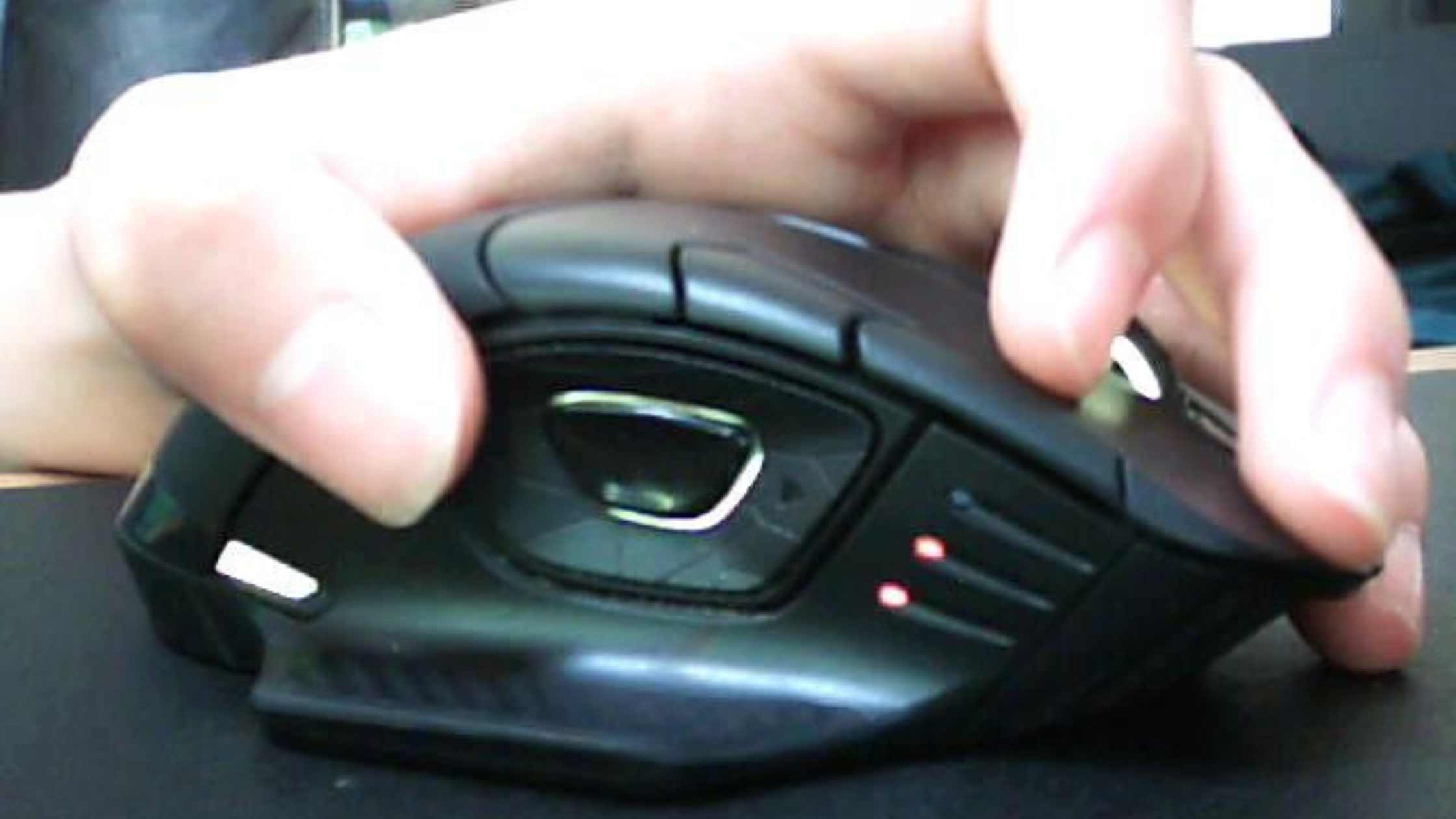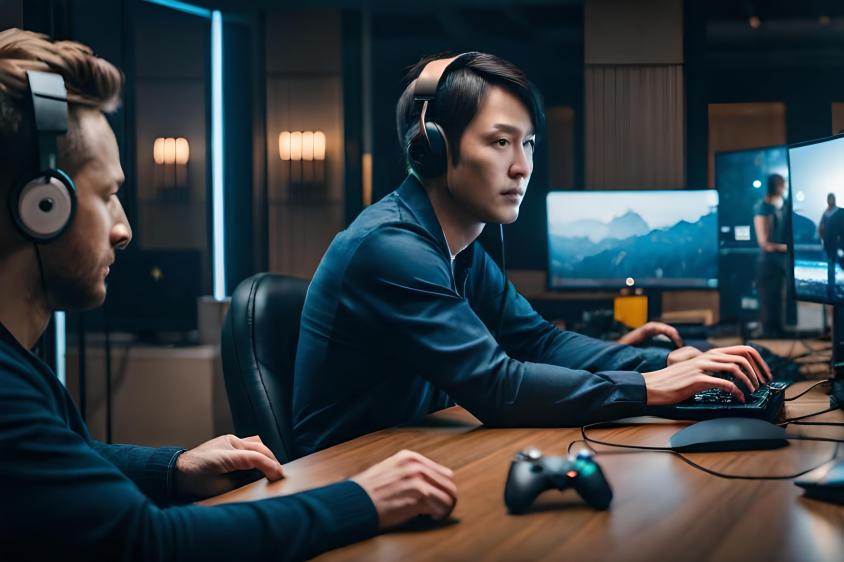Mastering Butterfly Clicking: Aim & Block Tutorial

To master butterfly clicking, it's important to focus on your grip, sensitivity adjustments, and aiming and blocking techniques. Make sure you have a comfortable and secure grip on your mouse. Adjust your sensitivity to your liking. Practice aiming and blocking techniques to improve your attack accuracy.
By mastering butterfly clicking, you'll be able to execute faster and more precise attacks. This will give you an edge in gaming and other applications.
Importance of grip, sensitivity adjustments, and aiming and blocking techniques
Your grip on the mouse is one of the most important factors in mastering butterfly clicking and effectively blocking hits. Grip techniques such as claw grip or fingertip grip can affect your comfort, precision, and control. Hand exercises and finger flexibility training can help you develop a strong grip and prevent fatigue during long gaming sessions. Additionally, finding the right gaming mouse for butterfly clicking is crucial. Gaming mouse for butterfly clicking can provide the necessary features and ergonomic design to enhance your clicking performance.
Moreover, adjusting your mouse sensitivity can help you fine-tune your movements and enhance your aim and blocking capabilities. It's recommended to experiment with different sensitivity levels until you find the one that suits your playstyle and hand movements the best.
Aiming and blocking techniques are also crucial in mastering butterfly clicking. You need to be able to aim accurately and adjust your aim quickly to effectively block hits. Reaction time training can help you improve your reflexes and response time, enabling you to react faster to incoming attacks.
Additionally, you should practice different blocking techniques such as drag clicking, jitter clicking, or normal clicking to find the one that works best for you. Remember to keep your hand and arm relaxed and avoid unnecessary tension that can affect your performance.
By mastering your grip, sensitivity adjustments, and aiming and blocking techniques, you can become a more effective butterfly clicker and dominate your opponents.
Benefits of mastering butterfly clicking for faster and more precise attack
Mastering the technique of butterfly clicking can greatly enhance your gaming experience by allowing for faster and more precise attacks, giving you a competitive edge against your opponents. The benefits of butterfly clicking go beyond just the speed and precision it offers. With consistent training exercises, it can also improve your hand-eye coordination and finger agility, which are essential skills in any gaming situation.
One way to improve your butterfly clicking technique is by incorporating training exercises into your daily routine. These exercises can help you increase your finger strength and dexterity, allowing you to click faster and more accurately. Additionally, practicing different clicking techniques can help you find the most comfortable and effective grip for your mouse, which is crucial for consistent and precise clicking. By mastering the butterfly clicking technique and regularly practicing training exercises, you can take your gaming to the next level and dominate your opponents with lightning-fast attacks.
| Benefits of Mastering Butterfly Clicking | Techniques to Improve Butterfly Clicking |
|---|
| Faster and more precise attacks | Finger strength and dexterity exercises |
| Improved hand-eye coordination | Practicing different clicking techniques |
| Increased finger agility | Finding the most comfortable and effective grip |
| Consistent and smooth movements | Consistent practice and focusing on proper technique |
To improve your butterfly clicking technique, it's crucial to have a proper grip using your thumb and pinky finger. This will give you the necessary stability and flexibility for precise movements.
To achieve this grip, you can follow step-by-step instructions and adjust your sensitivity for optimal accuracy.
Significance of a proper grip using the thumb and pinky finger
By gripping the mouse tightly with your thumb and pinky finger, you can achieve a stable position and prevent unnecessary movements while butterfly clicking, effectively blocking hits from opponents.
The proper grip using the thumb and pinky finger is essential in achieving precision, stability, flexibility, and control. The thumb and pinky finger work together to provide a stable base for the mouse. The thumb is responsible for controlling the left-click button, while the pinky finger provides support and control for the right-click button.
With this grip, you can easily move the mouse with your fingers without having to move your entire hand, allowing you to make quick and precise movements. With precise movements, you can block hits from your opponents effectively and efficiently, giving you an advantage in the game.
Importance of flexibility and stability for precise movements
Now that you have learned the significance of a proper grip using the thumb and pinky finger, it's time to move on to the importance of flexibility and stability for precise movements. Being able to block hits while butterfly clicking requires not only hand strength but also wrist mobility and quick reaction time. In order to achieve this, you need to work on your flexibility and stability through stretching exercises and muscle memory training.
Stretching exercises are crucial in maintaining wrist mobility and preventing injuries such as causing arthritis. You can do simple stretches like wrist flexion and extension, wrist rotations, and finger extensions to increase your range of motion and flexibility. Additionally, muscle memory training can help your hand remember the movements needed to block hits while butterfly clicking. This can be achieved through repetition and consistent practice, allowing your hand to become more efficient and precise in its movements. In the table below, we have listed some stretching exercises and muscle memory training techniques that can help you improve your flexibility, stability, and reaction time.
| Flexibility and Stability Exercises | Muscle Memory Training Techniques |
|---|
| Wrist flexion and extension | Consistent practice of butterfly clicking |
| Wrist rotations | Repetitive wrist and finger movements |
| Finger extensions | Using a metronome to improve timing |
| Grip strengthening exercises | Breaking down the movements into smaller parts |
| Reaction time training using online games | Visualizing the movements in your mind |
By incorporating these exercises and techniques into your training routine, you can improve your ability to block hits while butterfly clicking. Remember to take breaks and not overwork your hands, as this can lead to injuries and hinder your progress. With consistent practice and perseverance, you can achieve the flexibility, stability, and reaction time needed to become a skilled butterfly clicker.
Step-by-step instructions on achieving the proper grip
Achieving the proper grip is essential for you to feel confident and in control when using your mouse. Proper hand position is crucial to ensure that your fingers are in their natural position and are not stretched out or cramped. This will help you avoid muscle strain and fatigue, allowing you to click for longer periods with ease.
Finger flexibility is also a key factor in achieving the proper grip. Make sure to keep your fingers relaxed and flexible to achieve the best results while clicking. The thumb grip should be firm but not too tight, while the pinky placement should be comfortable and stable.
Lastly, timing accuracy is crucial to block hits while butterfly clicking. Practicing with different grips and hand positions will help you develop the right timing and accuracy needed to block hits effectively.
Adjusting sensitivity for optimal accuracy
To optimize your accuracy, it's important to make incremental adjustments to find the sensitivity that feels most comfortable for you. Sensitivity customization allows you to tweak the speed of your cursor movement according to your preference. This is especially crucial for butterfly clicking, as the technique requires precision and speed.
When adjusting your sensitivity, it's important to consider mouse acceleration, hand positioning, reaction time, and click speed. Mouse acceleration refers to the rate at which the cursor moves in response to mouse movement. If you're used to a higher mouse acceleration, you might find it harder to control your cursor when butterfly clicking. Hand positioning also plays a crucial role in sensitivity customization. A comfortable grip and posture can help reduce the strain on your hand and improve your clicking speed. Finally, adjusting your sensitivity also affects your reaction time and click speed. Incremental adjustments can help you find the sweet spot that allows you to click faster without sacrificing accuracy.
| Factors to Consider | Tips for Customizing Sensitivity |
|---|
| Mouse Acceleration | Disable mouse acceleration for more precise movement |
| Hand Positioning | Find a comfortable grip and posture to reduce strain |
| Reaction Time | Adjust sensitivity to improve your reaction time |
| Click Speed | Incrementally increase sensitivity for faster clicking |
| DPI Settings | Experiment with different DPI settings to find the perfect balance of speed and accuracy. |
Aiming Techniques
When it comes to aiming in Minecraft PvP, you may find that relying solely on your wrist can limit your accuracy and speed. To improve your aim, consider utilizing your entire arm for greater control and precision.
Additionally, don't underestimate the role of your pinky and thumb in providing stability and flexibility during gameplay. To maintain a secure grip on your mouse, make sure to support it with these two fingers.
Utilizing the entire arm for aiming instead of relying solely on the wrist
You can improve your aiming accuracy and reduce the risk of strain by using your entire arm instead of just your wrist while block hitting with butterfly clicking.
Arm movements play a crucial role in controlling the movement of the mouse. The fluid and controlled movements that come with using the whole arm allow for more precise and accurate movements. By using the arm, you also engage larger muscles in your body, reducing the strain on your wrist and hand.
Muscle memory is essential when utilizing the entire arm for aiming. Tracking practice and precision training are necessary to develop muscle memory. The more you practice, the more your muscles will remember the movements required for accurate aiming.
Hand-eye coordination is also improved when using your entire arm. By incorporating arm movements, you can develop a more seamless connection between your eyes and your hand movements, resulting in more accurate aim.
Remember that it may take time to develop this technique, but the benefits are worth it in the long run.
Role of the pinky and thumb in providing stability and flexibility
Now that you've learned how to use your arm to aim while butterfly clicking, let's focus on the role of the pinky and thumb in providing stability and flexibility. These two fingers play a crucial role in maintaining a steady grip on the mouse while clicking rapidly.
One way to improve your pinky thumb coordination is by practicing exercises that target finger flexibility and hand stability. By strengthening the muscles in your hand, you can improve your grip strength and develop muscle memory for more precise clicking. Let's take a look at a table that outlines some exercises you can try to improve your pinky-thumb coordination and grip strength:
| Exercise | Description | Repetitions | Sets | Rest |
|---|
| Finger curls | Hold a light weight in your hand and curl your fingers around it, then release. | 10 | 3 | 30 seconds |
| Thumb extensions | Place a rubber band around your fingers and thumb, then stretch your thumb out to one side. | 10 | 3 | 30 seconds |
| Grip squeezes | Hold a stress ball or grip trainer in your hand and squeeze it as hard as you can. | 10 | 3 | 30 seconds |
Incorporating these exercises into your daily routine can help improve your pinky thumb coordination, finger flexibility, and grip strength. With practice, you'll be able to block hits while butterfly clicking with ease.
Secure grip on the mouse with thumb and pinky support
To achieve a secure grip on the mouse, make sure your thumb and pinky are providing support throughout your clicking movements. This will help to maintain hand stability and ensure that your fingers are in the correct position for effective block hitting techniques.
When holding the mouse, your thumb should rest on the side of the mouse and your pinky should be curled under the side of the mouse. This will allow for a comfortable and secure grip, while also providing the necessary support for your clicking movements.
By using your thumb and pinky to provide support, you can ensure that your hand remains stable throughout your clicking movements. This is essential for block hitting techniques, as even the slightest movement can cause your aim to be off.
In addition, proper finger placement can help to prevent strain and fatigue, allowing you to click more efficiently and for longer periods of time. By following these tips, you can achieve a secure mouse grip and improve your block hitting techniques.
Tips for Block Hitting

When it comes to block hitting, it's important to pay attention to your finger placement and timing. Proper finger placement will help you execute block hits quickly and accurately. Timing is also crucial to ensure that you block just in time to avoid taking damage.
Additionally, starting combos with a block hit can be very efficient. It gives you a chance to get the first hit in while also blocking any potential attacks from your opponent.
Lastly, practicing block hitting with different block types and in various situations is essential. This will help you become more versatile and adapt to different scenarios.
Proper finger placement and timing for block hitting
First things first, when it comes to block hitting while butterfly clicking, finger pressure and hand positioning are key. You wanna use your ring finger to hit the block, as it's the strongest finger and can exert the most pressure.
Make sure your hand is positioned comfortably on the mouse, with your fingers hovering over the buttons. Timing accuracy and muscle memory are also important factors in perfecting your block hitting technique.
You need to tap all three fingers (index, middle, and ring) simultaneously, with the same amount of pressure each time. This takes practice and repetition to develop the muscle memory needed for consistent timing.
Common mistakes include using the wrong finger to hit the block, or not tapping all three fingers at the same time. By focusing on proper finger placement and timing, you can improve your block hitting while butterfly clicking and become a more effective player.
Efficiency of starting combos with a block hit
Maximizing your combo potential can be achieved by efficiently starting combos with a well-timed and precise technique. Starting combos with a block hit can be an effective offensive maneuver, as it allows you to interrupt your opponent's attack while simultaneously initiating your own.
This technique can also be used defensively to mitigate damage from your opponent's attacks. To maximize the damage output of your combos, it's important to have good block timing. This means that you need to block at the right time to ensure that your opponent's attack is interrupted and that your own attack is initiated immediately after.
Practice this timing by practicing block hitting against a friend or on a training dummy. By mastering this technique, you can set yourself up for a successful combo and deal maximum damage to your opponent.
Importance of practicing block hitting with different block types and in various situations
Practicing with different types of materials and in various situations is key to becoming a skilled block hitter. By using different block types, you'll learn how each one affects your timing and reaction speed during a fight. For example, wood blocks have a lower knockback resistance compared to diamond blocks, which means you'll need to adjust your block placement and angle accordingly. Similarly, iron blocks have higher durability than wood blocks, making them more suitable for defending a base.
Timing practice is crucial in improving your block-hitting skills. You need to know the exact moment to block a hit to effectively start a combo or defend yourself from incoming attacks. Practicing with a friend or in a PvP server will help you develop your timing and reaction speed.
Additionally, practicing in various situations such as fighting in tight spaces or against multiple opponents will help you get used to adjusting your block placement and angle to maximize your defense and offense.
Practice and Dedication
To truly master the art of butterfly clicking and block hitting, you'll need to put in a significant amount of practice and dedication. This means not only practicing on a regular basis, but also focusing on specific techniques to improve your finger strength, muscle memory, and hand-eye coordination.
One effective practice tip is to start with slower clicking speeds and gradually increase the speed as you become more comfortable and consistent with your clicks. Additionally, incorporating consistency techniques such as using a metronome or practicing with a specific block type can help you become more confident and accurate with your block hits.
It's important to remember that mastering these skills takes time and patience, so don't get discouraged if you don't see immediate progress. With dedication and consistent practice, you'll soon be able to perform complex block-hitting sequences with ease and enhance your gameplay.





